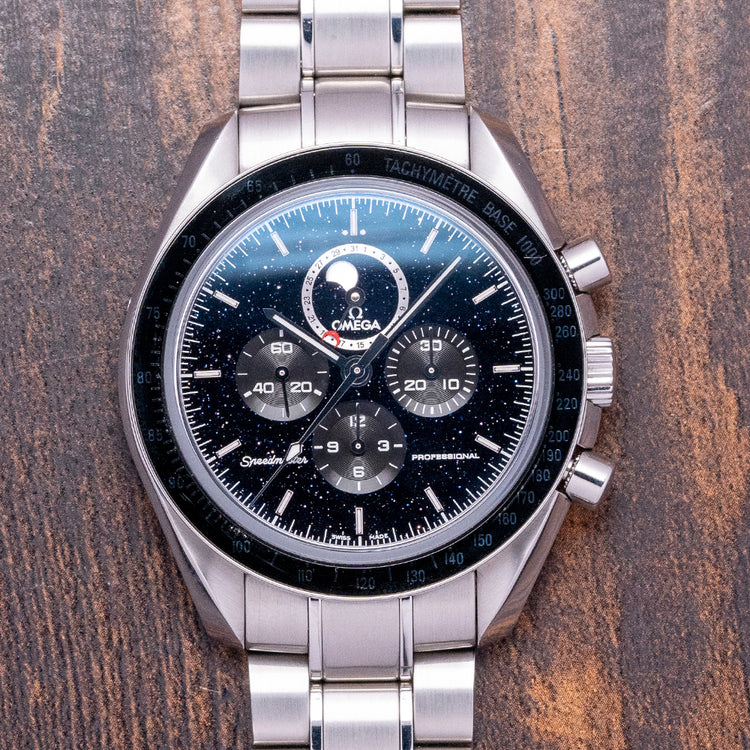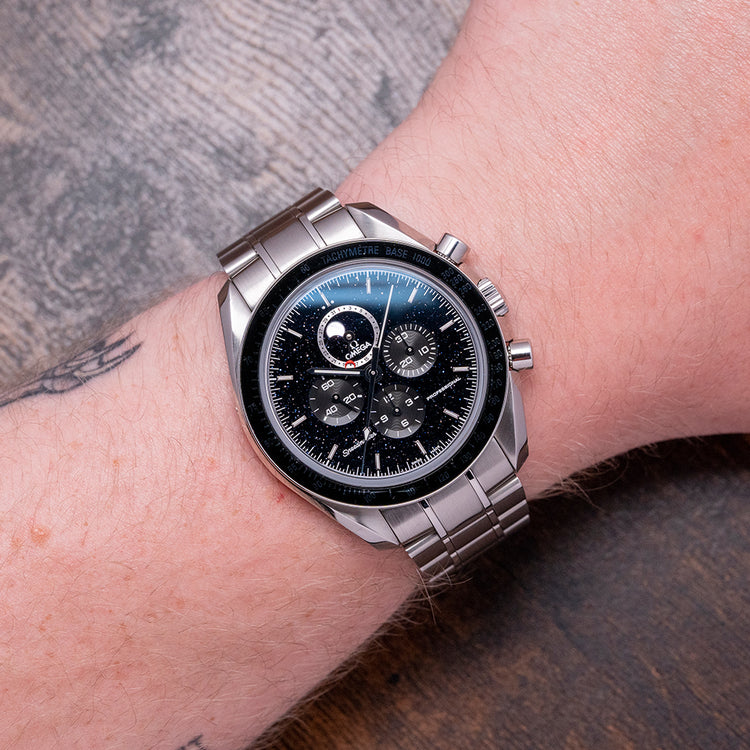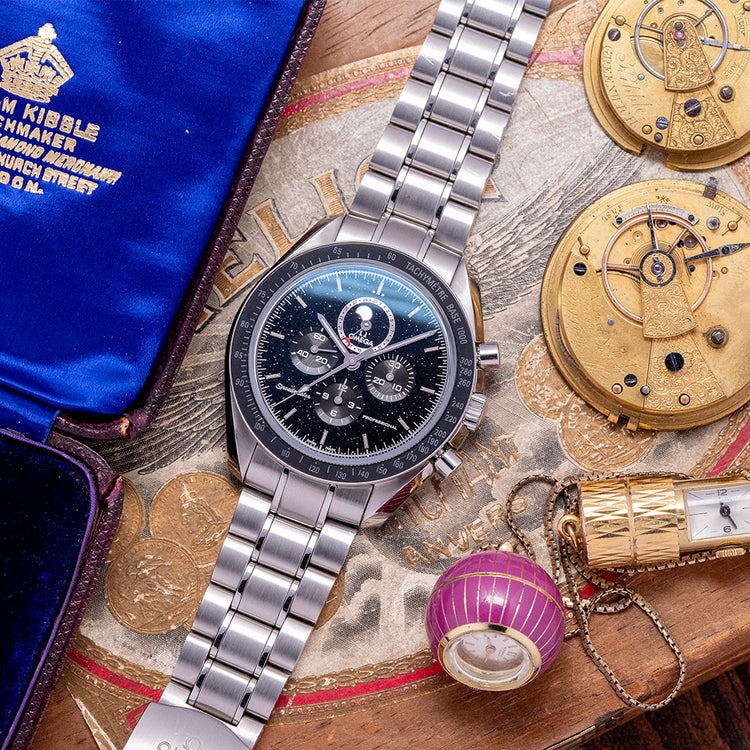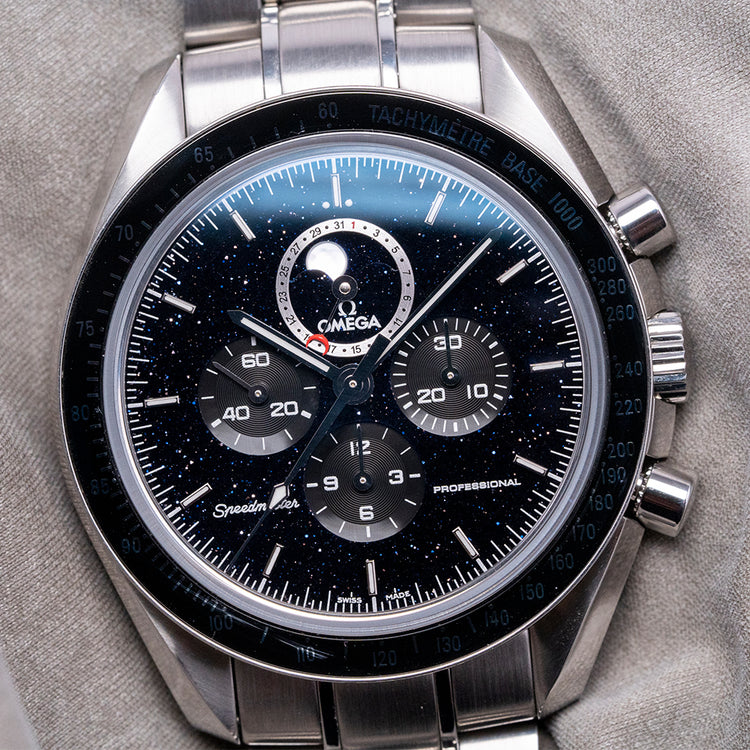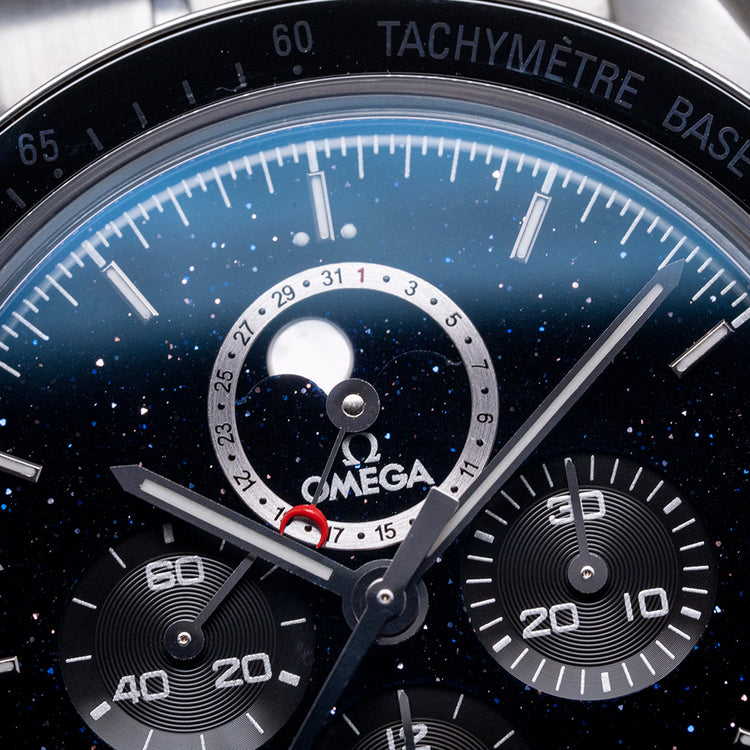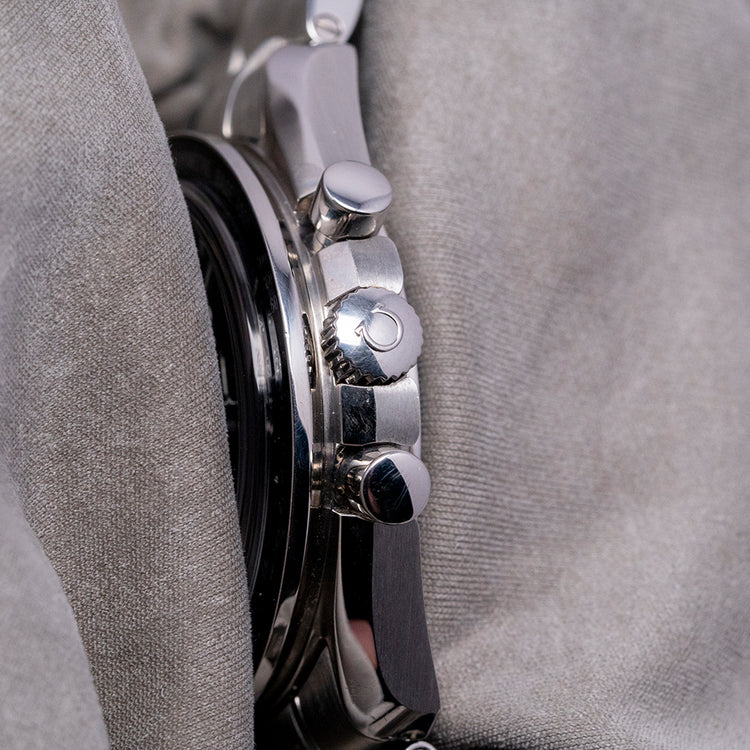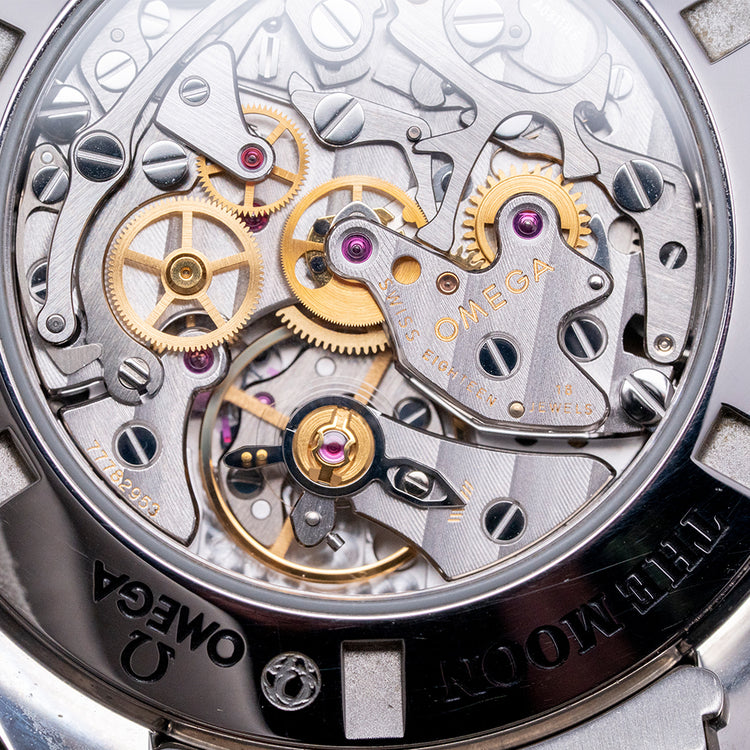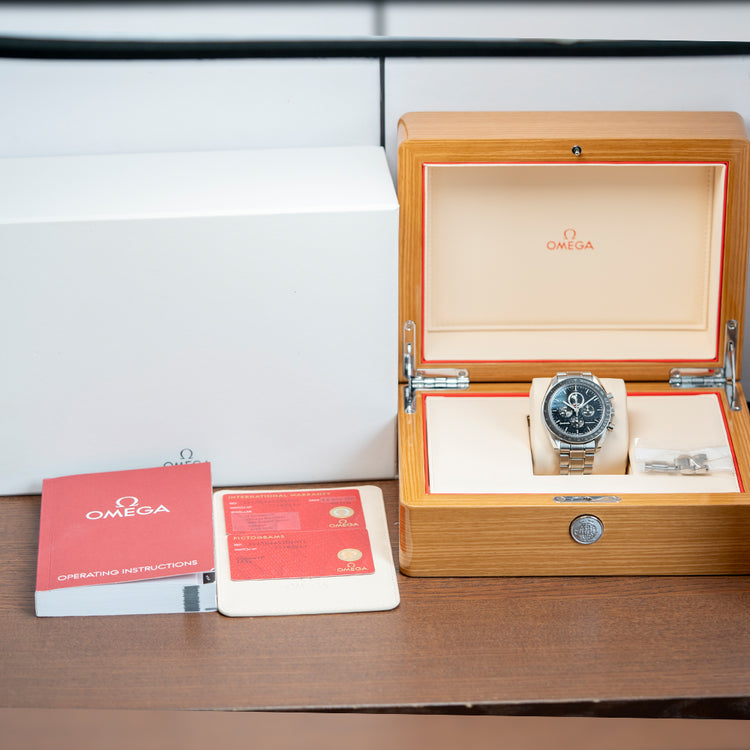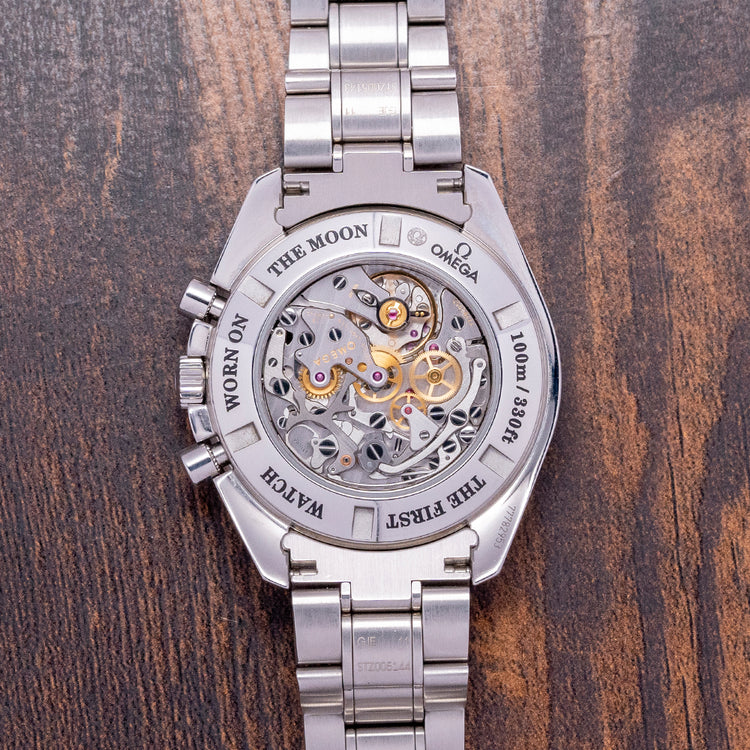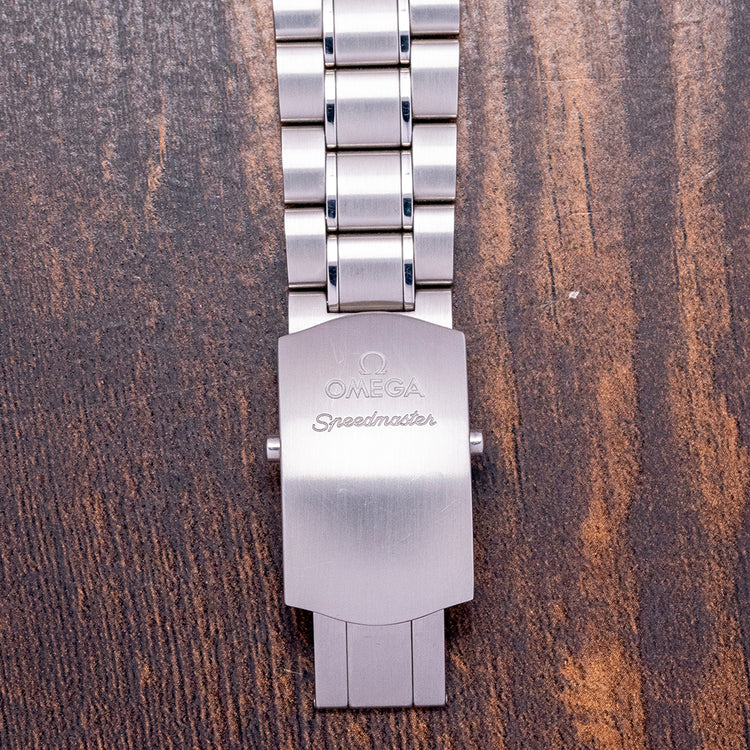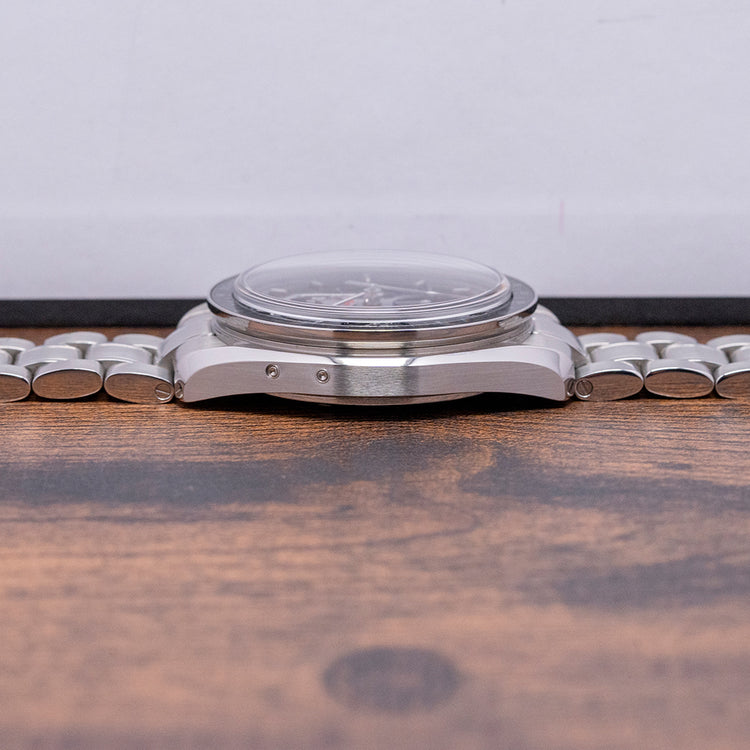More Information
Description
More
Less
Here we have a 2019 Omega Speedmaster Moonphase Aventurine Dial 44 which was introduced in 2012, with a 44.5mm stainless steel case, polished and brushed surfaces lead to the characteristic twisted tapering lugs, the crisp lines transition effortlessly around the case and a lug-to-lug length of 49.5mm and a case thickness of 14mm ensures a comfortable fit on the wrist. Down the right side, we have the recessed piston chronograph pushers and a signed crown in the centre, protected by the case. On the left side we have recessed pushers to adjust the moonphase using the top pusher and to adjust the date using the bottom pusher. A fixed black ceramic tachymeter insert supports the domed Sapphire crystal, AR-coated above the star of the show: an incredibly beautiful Aventurine dial, made from transparent quartz or quartzite. Inside the quartz, small flake-shaped inclusions reflect light in a magical way, known as "aventurescence." When you rotate your wrist, the dial shimmers from black to blue, giving you the impression that you are looking into the starry night sky; this is a mined mineral that makes each dial unique. An outer minute track surrounding the applied Rhodium baton indexes marking the hours, at 12 o’clock we have the Moonphase and date register complemented by a red crescent pointer date hand, three recessed Sub-dials are made up of running seconds, 30 minutes, and 12 hours, each with a white stick hand. Slender hands filled with lume and an elegant, long central arrow-point chronograph seconds hand accurately hit the minute track. The dial has perfect symmetry, and the hands and indexes are lumed with Super-Luminova. The screw-down sapphire exhibition case back is engraved with “The First watch worn on the Moon”, a fitting testament to man's achievements in space. Inside, we have the Manually Wound Omega Cal. 1866, 17 Jewels, beating at 21,600 Beats per hour. This moonphase chronograph is based on the Omega Cal. 1861. It comes paired with a 20mm OEM Omega stainless steel, brushed and polished, full-sized bracelet featuring a push-button release clasp, and all links are included. This watch is sold with its Omega box and Omega paperwork.
Points of Mention
More
Less
Personal Note
More
Less
Specification
More
Less
Movement : Manually Wound Omega Cal. 1866
Age : November 2019
Year : 2019
Case Size : 44.25mm
Case Thickness : 14mm
Lug to Lug : 49.5mm
Lugs : 21mm
Condition : Pre-Owned
Box and Papers : Box & Papers
Case Material : Stainless Steel
Warranty : 12 Months NON-Waterproof Warranty
The wrist model's wrist size is 7inch
About Omega
More
Less
Description
Here we have a 2019 Omega Speedmaster Moonphase Aventurine Dial 44 which was introduced in 2012, with a 44.5mm stainless steel case, polished and brushed surfaces lead to the characteristic twisted tapering lugs, the crisp lines transition effortlessly around the case and a lug-to-lug length of 49.5mm and a case thickness of 14mm ensures a comfortable fit on the wrist. Down the right side, we have the recessed piston chronograph pushers and a signed crown in the centre, protected by the case. On the left side we have recessed pushers to adjust the moonphase using the top pusher and to adjust the date using the bottom pusher. A fixed black ceramic tachymeter insert supports the domed Sapphire crystal, AR-coated above the star of the show: an incredibly beautiful Aventurine dial, made from transparent quartz or quartzite. Inside the quartz, small flake-shaped inclusions reflect light in a magical way, known as "aventurescence." When you rotate your wrist, the dial shimmers from black to blue, giving you the impression that you are looking into the starry night sky; this is a mined mineral that makes each dial unique. An outer minute track surrounding the applied Rhodium baton indexes marking the hours, at 12 o’clock we have the Moonphase and date register complemented by a red crescent pointer date hand, three recessed Sub-dials are made up of running seconds, 30 minutes, and 12 hours, each with a white stick hand. Slender hands filled with lume and an elegant, long central arrow-point chronograph seconds hand accurately hit the minute track. The dial has perfect symmetry, and the hands and indexes are lumed with Super-Luminova. The screw-down sapphire exhibition case back is engraved with “The First watch worn on the Moon”, a fitting testament to man's achievements in space. Inside, we have the Manually Wound Omega Cal. 1866, 17 Jewels, beating at 21,600 Beats per hour. This moonphase chronograph is based on the Omega Cal. 1861. It comes paired with a 20mm OEM Omega stainless steel, brushed and polished, full-sized bracelet featuring a push-button release clasp, and all links are included. This watch is sold with its Omega box and Omega paperwork.
Points of Mention
Personal Note
Specification
The Brand
Enquire or Book an Appointment
Would you like to discover further details about this watch, or perhaps arrange an appointment to view and try it on? Complete this form and a member of our team will get back to you shortly.
You May Also Like
































